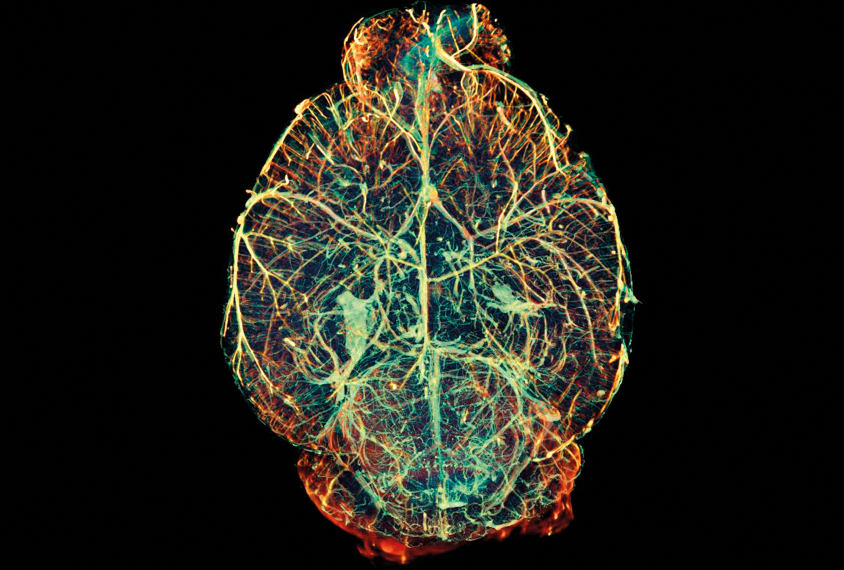
Simon Walker-Samuel / SCIENCE PHOTO LIBRARY
THIS ARTICLE IS MORE THAN FIVE YEARS OLD
This article is more than five years old. Autism research — and science in general — is constantly evolving, so older articles may contain information or theories that have been reevaluated since their original publication date.
Researchers have identified DNA segments that direct gene expression in miniature chunks of mouse brain. They can use these codes to manipulate animal brains with an unprecedented level of specificity.
They presented the unpublished method today at the 2016 Society for Neuroscience annual meeting in San Diego.
The brain is a collection of diverse cell types and regions, each with a different function and pattern of gene expression. To parse the role of particular neuron subtypes or brain regions, researchers restrict gene expression in those types of neurons.
But so far, available methods are limited in their ability to home in on specific brain regions, says Stefan Blankvoort, a postdoctoral fellow in Clifford Kentros’ lab at the Kavli Institute for Systems Neuroscience in Trondheim, Norway.
In one traditional method, researchers use a DNA sequence that directs expression of a protein unique to one type of neuron — for example, parvalbumin. But neurons that express parvalbumin still comprise many subtypes and populate multiple regions, Blankvoort says.
The alternative is to randomly insert sequences into the genome and then look at where they’re expressed. “This method can make very specific lines, but you have to make a lot of them because the genome is huge and you have to get lucky to hit the right spot,” Blankvoort says.
Surgical precision:
In the new method, the researchers first slice mouse brains into sections roughly the length of a grain of salt. They then precisely excise certain brain regions with a tiny scalpel. So far, they have targeted four regions, including the medial entorhinal cortex (MEC), which helps regulate memory formation and navigation. Their goal is to dissect 20 brain regions.
The researchers then identify DNA sequences that cluster around sites of active gene expression in a particular region. They do this by targeting certain histones — ones that help activate gene expression — and extracting the attached DNA.
By sequencing this DNA, the researchers identified enhancers, or DNA segments that drive gene expression, at specific active sites in the MEC. They used a database called ENCODE to confirm that these same enhancers do not direct gene expression in other tissues.
In all, they found 165 enhancers that may be specific to the MEC. They found that of eight enhancers they tested, six direct gene expression predominantly in the MEC. One enhancer in particular seems to drive expression in only one cell type in a certain layer of the MEC. “This suggests we can get cell-type-specific expression,” Blankvoort says.
The researchers plan to use the method to introduce proteins into certain cell circuits, which will allow them to turn these circuits on or off using beams of light. And they can build constructs with the enhancers to manipulate gene expression in certain brain regions. They can also use antibodies specific to these enhancers to map patterns of gene expression.
For more reports from the 2016 Society for Neuroscience annual meeting, please click here.
By joining the discussion, you agree to our privacy policy.